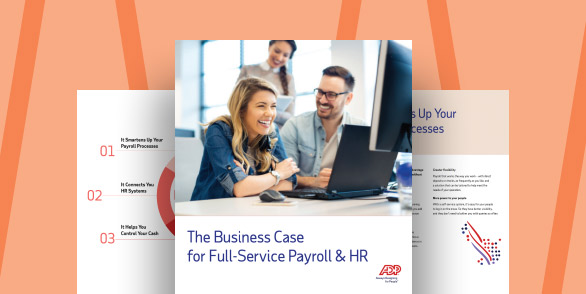Human resource (HR) strategy maximises tan organisation’s human capital so it can achieve its broader business objectives. For some employers, however, transitioning HR from a purely transactional function to a strategic one can be challenging. But considering the competitive advantages enjoyed by talent-driven organisations, it is an obstacle worth overcoming.
What is an HR strategy?
HR strategy is a roadmap for solving an organisation’s biggest challenges with people-centric solutions. This approach requires HR input during policy creation and elevates the importance of recruitment, talent management, compensation, succession planning and corporate culture.

Why is HR strategy important?
Without strategy behind it, HR remains an administrative function and business growth may be hindered. Consider, for instance, two different companies that would like to expand into new markets.
One of them is strategic and gives HR a seat at the table from the very beginning. It researches locations that would be the most advantageous from an employment standpoint and then develops a long-term plan for networking highly-qualified, passive candidates in the chosen regions.
The other company takes transactional approaches to solving problems. Instead of including HR in its expansion discussions, it delegates a hiring manager to recruit candidates without knowing if the desired talent exists in that market or if the employment rules add a significant number of unexpected obstacles.
As the first example shows, when HR is involved and integrated at many levels of an organisation, it can create a powerful advantage.
How to create a human resources strategy
Creating an HR strategy means taking a hard look at an organisation’s strengths, weaknesses, opportunities and threats – a process also known as a SWOT analysis. Every business is different, but most follow these steps:
- Understand the business and its objectives
Talk to people throughout the organisation to gain a full understanding of the business’s past achievements, the products or services that it offers today, and what it hopes to accomplish in the future.
- Evaluate employee skillsets
Review employee performance, resumes, project history and continuing education to assess the collective workforce skill level.
- Conduct a gap analysis
Determine if employees have what they need to maximise their productivity or if investments in additional resources are necessary.
- Assess talent strategy
Regularly auditing compensation, benefits, work environments and employee engagement can help employers compete for new talent and retain valued workforce members.
- Develop existing employees
If any employees appear ready for new challenges or have skills outside their current role, create a development plan that will allow them grow to with the business.
- Limit turnover
Get to the root cause of why people leave an organisation and create a comprehensive plan to address the problem and prevent labour shortages.
- Plan ahead for succession
Knowing which employees can easily fill other positions, should they become vacant, helps lessen disruptions when someone abruptly leaves the organisation.
- Rely on analytics
Compensation history, turnover rates, employee engagement and other HR metrics can guide strategic decisions.
- Create a mission and vision statement
Mission and vision statements summarise the HR strategy and serve as a litmus test for all policies and decisions thereafter.
What are the benefits of strategic human resources planning?
One of the primary benefits of syncing HR strategy with broader business initiatives is that it helps organisations allocate budgets in ways that will maximise their return on investment (ROI). Employers who take this approach to HR, may also be able to:

Best practices for implementing an HR strategy
Everyone has fires to put out, which is why being proactive rather than reactive in the workplace does not always come naturally. The good news, however, is that HR experts have perfected some tried and true methods for implementing strategy effectively. Best practices are to:
- Involve key stakeholders
Strategy requires collaboration. HR professionals should be involved from the beginning and managers and other senior leaders should sign-off on the plan. - Know the budget
Without funds to support it, HR strategy quickly becomes pie in the sky. Focus on initiatives that realistically fit within the organisation’s budget. - Remember the basics
Do not overlook administrative responsibilities in favour of strategy. A compliance violation will derail any plan, no matter how grand it is. - Recognise transactional solutions
The quickest answer to a problem may not always be optimal in the long run. Make it a habit of acting strategically in every endeavour. - Monitor and adjust the strategy
Measure the strategy’s effectiveness over time with key performance indicators (KPIs). If something’s not achieving the desired results, revise it accordingly.
Frequently asked questions
What are strategic HR functions?
Examples of strategic HR functions include compensation planning, recruitment, succession planning and employee development.
What are four human resource strategies?
- Limit transactional problem solving
- Be proactive, rather than reactive
- Provide people-centric solutions to large-scale challenges
- Connect people who can solve each other’s problems
What are the types of HR strategy?
There are essentially two types of HR strategies – those that are overarching and those that are specific. Overarching strategies apply to the management of an organisation’s people as a whole, while specific strategies address subsets of HR, like talent management or recruitment.
How do you develop a strategic HR plan?
A strategic HR plan can be created by thoroughly evaluating an organisation’s strengths, weaknesses, opportunities and threats. This is known as a SWOT analysis. Once employers know this information, they can create realistic goals that account for what they do well and where they need improvement.
This article offers practical information concerning the subject matter and is provided with the understanding that ADP is not rendering legal or tax advice or other professional services.




